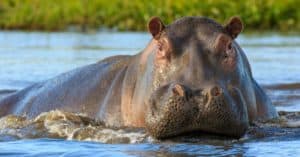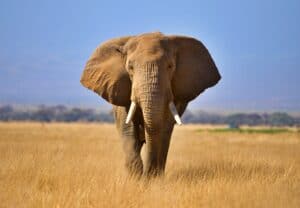There are two species of hippopotamuses: the common hippopotamus (Hippopotamus amphibius) and the pygmy hippopotamus (Choeropsis liberiensis). The pygmy hippopotamus is the smaller of the two by far, weighing only 350-600 pounds. The smaller hippo is also far less social than its larger relative. Pygmy hippos typically live solitary lives, although they will sometimes pair up with one other hippo.
Common hippos, however, are social animals that live in groups of 10-30 animals, though the number can vary. Some documented hippo groups have numbered in the hundreds. But what do you call a group of these massive semi-aquatic mammals?
It may seem comical (and perhaps a tad insensitive), but a group of hippos is called a bloat. There are also several lesser-used names for a hippo group, including a thunder, a herd, a sea, a school, a pod, a dale, a crash, and a siege.
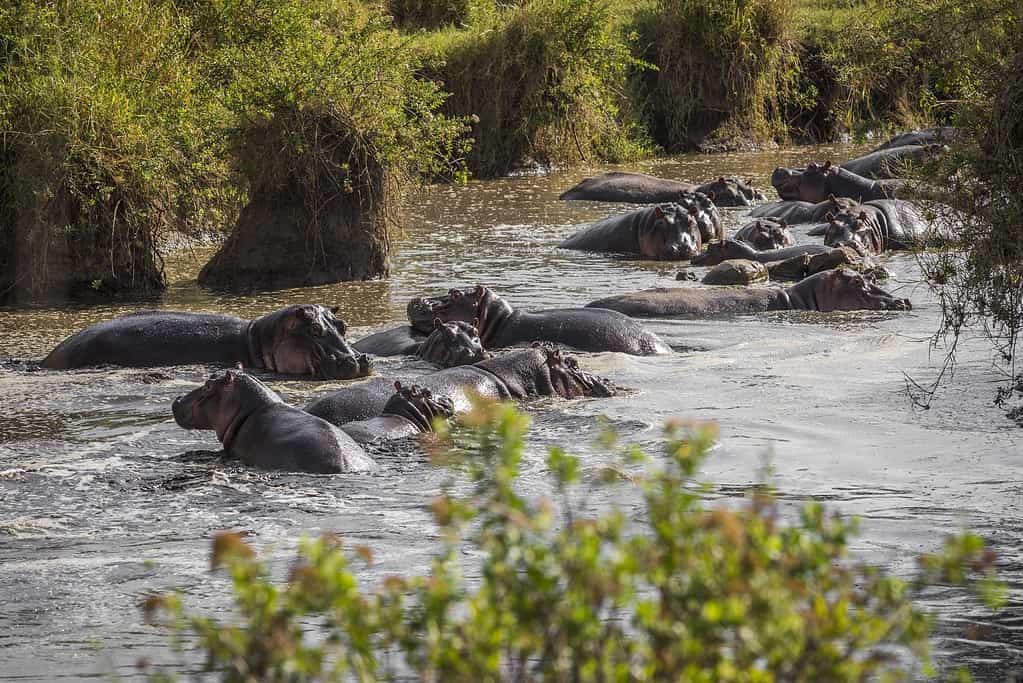
Hippo bloats can number from less than a dozen to a couple of hundred animals.
©iStock.com/Miltiadis Louizidis
Bloats
The common name for a group of hippos obviously derives from the bloated appearance of these rotund animals. Hippos are the third-largest land animals on the planet, behind only the elephant and the white rhinoceros.
The average female hippopotamus weighs around 3,000 pounds, while a male can weigh anywhere from 3,500 to over 9,900 pounds. When a few dozen to a couple of hundred of these massive animals group together, that group is… well… quite bloated.
The Social Structure of Hippo Bloats
Hippo bloats often comprise several adult females, their calves, and several adult males, including one dominant male. The dominant male has mating privileges with the adult females in the bloat. This bull isn’t always the largest in the bloat, but he is the male that has proven his dominance through clashes with other males. Once a male has asserted dominance, he reminds all potential rivals that he is in charge through the rather inelegant practice of using his fan-shaped tail to fling his dung as far as he can, thus marking the territory with his scent.
When rival males clash, they stand nose to nose and open their mouths as wide as possible to brandish their tusks. Male hippos have much larger tusks than females, reaching almost 1 ½ feet long. A female hippo’s tusks may be half that size.
Hippos can open their mouths up to a 150° angle. When the male rivals size each other through this behavior known as gaping, it is a test to see which one will back down. If one of the males does back down, that is usually the end of the confrontation.
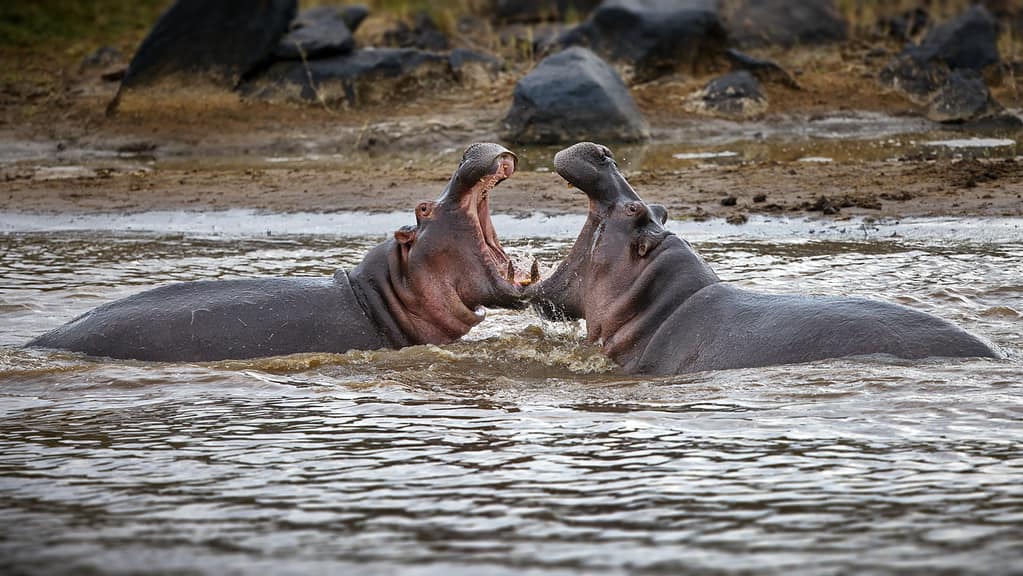
Rival bulls size each other up through a behavior known as gaping.
©iStock.com/Wirestock
Bloat Battles
If neither bull backs down, though, a battle will commence. The enormous male hippos will fight by swinging their enormous heads like wrecking balls and slashing one another with their tusks, all while bellowing ferociously. Hippos are surprisingly loud. Hippo vocalizations can measure up to 115 decibels. That is nearly equivalent to the volume of a rock concert. If neither bull concedes in the battle for dominance, the two can potentially fight to the death.
When a male has established dominance in a bloat, that bull becomes the primary progenitor of the next generation. When the atmosphere in the bloat is peaceful and under control, the dominant male will occasionally allow subordinate males to mate with some females in the bloat, especially if the dominant male is focused on a particular female himself at the time.
Why Live in Bloats?
Hippos live in these groups mainly for protection. In their native range of sub-Saharan Africa, hippos are surrounded by potential predators. Lions are possibly the only predator that can take down a mature hippo, but even then, it depends on the number of lions, the age and condition of the hippo, the distance from water, and a host of other factors. Predation of mature hippos is quite rare. Hippo calves, however, are vulnerable to lions along with other predators, including hyenas, leopards, and crocodiles. By living in a bloat, the young hippos are much better protected from Africa’s predators.
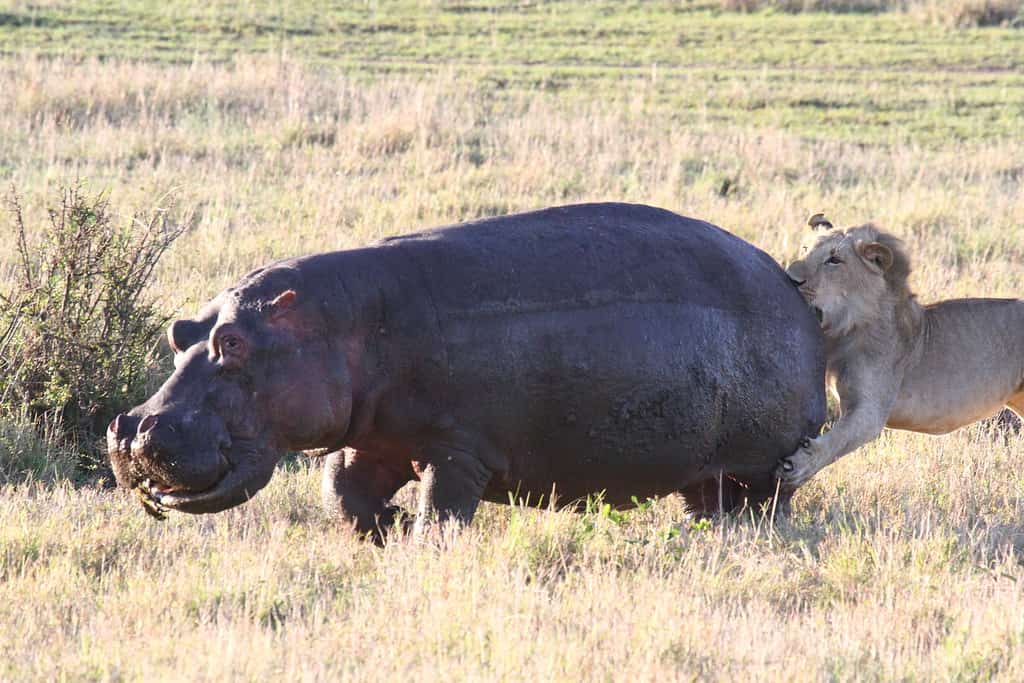
Taking down a mature hippo is no easy task. This lion did not succeed.
©iStock.com/Alla Tsytovich
There is also a social component to the hippo bloat. While the name “hippopotamus” derives from a Greek word that means “river horse” or “water horse,” the hippopotamus is not related to the horse at all. Instead, some of its closest living relatives may be whales and dolphins. Dolphins are highly social, as are many whales. So, when hippos also band together in social groups, it seems to be an extended family tradition, so to speak.
Hippos interact and even play together. Virtually all mammals play, and the hippo is no different. A snippet of the play and relational interactions that happen in a hippo bloat can be seen in this video from the Cincinnati Zoo & Botanical Garden. This zoo’s bloat consists of two adults, Tucker and Bibi, and two youngsters, Fiona and Fritz. This family clearly enjoys being together.
Hippo-Sized Tempers in the Bloat
Despite the important social connections within a bloat, these huge animals are notoriously moody and short-tempered. It doesn’t take much to rile a hippopotamus.
Hippos are nervy animals. There are multiple reasons for their nervousness. They have rather poor eyesight. Nerves can be aroused when a hippo senses something is happening but can’t necessarily see it.
They are also very territorial animals. This is due, in large part, to the fact that hippos need water to survive. A hippopotamus cannot sweat to release excess body heat. Hippos do excrete “blood sweat,” a glandular secretion that turns red soon after excretion. The substance contains microscopic structures that scatter and diffuse ultraviolet light. The secretion acts as a natural sunscreen for the hippo. It also has antibacterial properties that protect the animal from infection. However, this “blood sweat” is not the same as human perspiration.
Humans sweat to reduce body temperature. A hippo has no such sweat glands under its skin. That could be a real problem in a blazing African summer, but the hippo solves the problem by spending nearly the whole day in the water. If it weren’t for their watery habitat, hippos would dehydrate and die. So when hippos squabble over a stretch of water, it is often because that water is the hippo’s only means of survival.
These fights can grow in number and in intensity during the dry season when water levels decrease, causing hippo tempers to boil over.
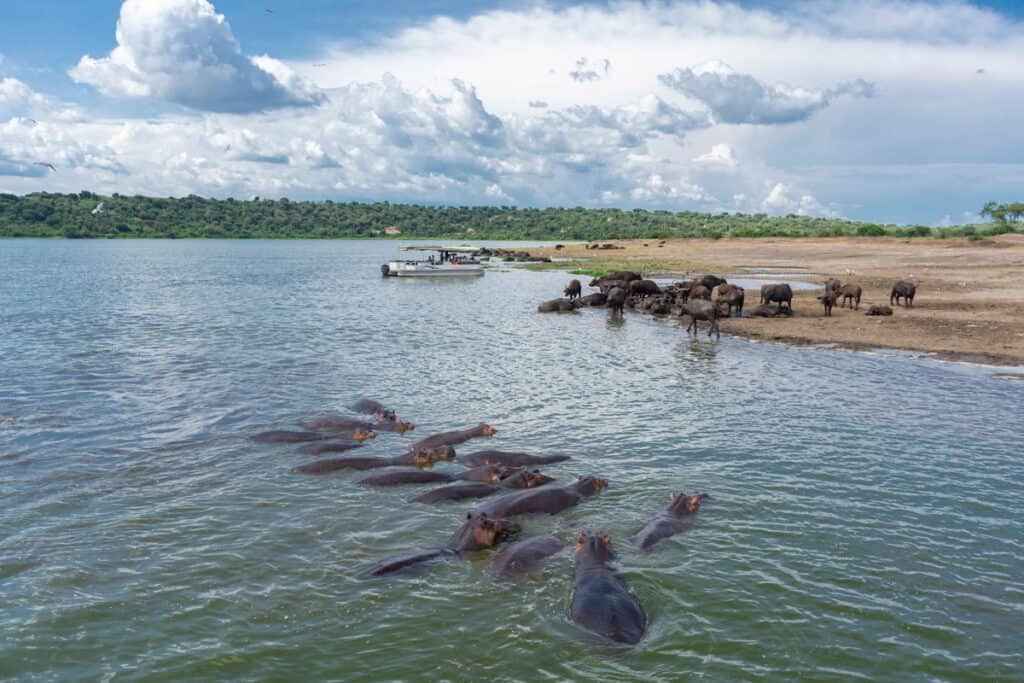
Hippos spend most daylight hours in the water to keep cool and hydrated.
©Arnold Mugasha/Shutterstock.com
Dangers From Within the Bloat
When a dispute breaks out, it often doesn’t last long, and most adults escape with superficial scrapes, at worst. Normally, they are not injured at all in these spats. However, if a hippo calf happens to get caught in the middle of one of these adult temper tantrums, it can quickly turn tragic. No protection is available for a youngster when thousands of pounds of hot-tempered hippos clash. In these instances, the bloat stops being the calf’s protection and instead becomes its biggest threat. It is a cruel irony that has claimed the lives of innumerable hippo calves.
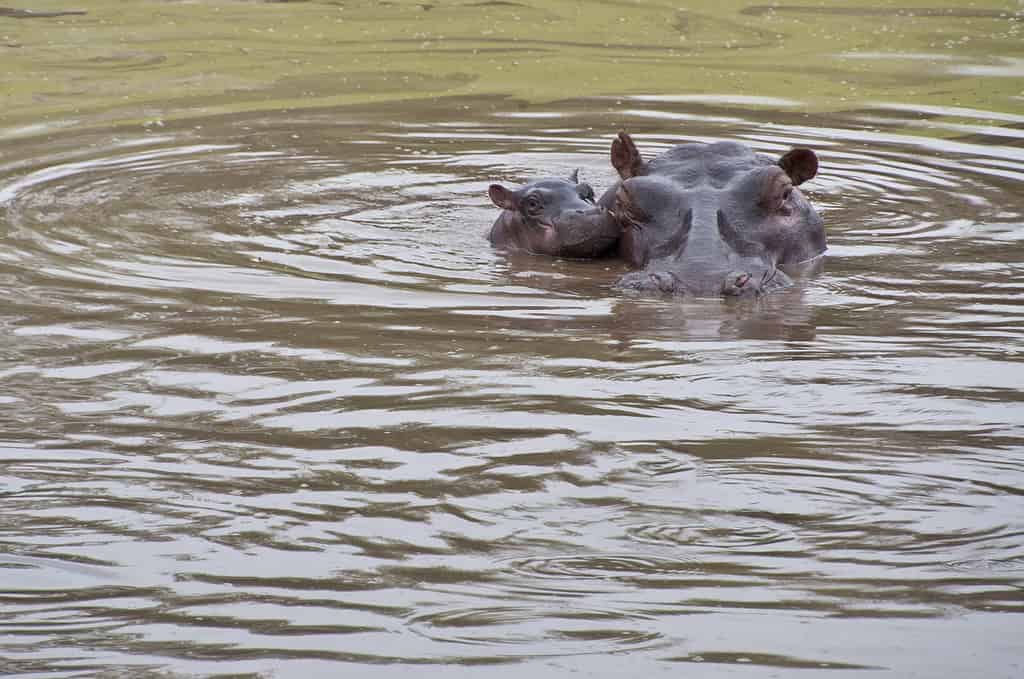
Hippo mothers must protect their calves from the fiery tempers that exist within the bloat.
©iStock.com/nwbob
A Messy Community
A hippo bloat is a complicated society that provides safety and danger simultaneously. There is nothing neat and tidy about a hippo bloat, and that is not just due to the flinging of feces. The relationships in this community are messy, complex, and even dangerous, yet these hippos all need one other. Such is life in a hippo bloat.
The photo featured at the top of this post is © Paul Maritz / CC BY-SA 3.0 – License / Original
Thank you for reading! Have some feedback for us? Contact the AZ Animals editorial team.



